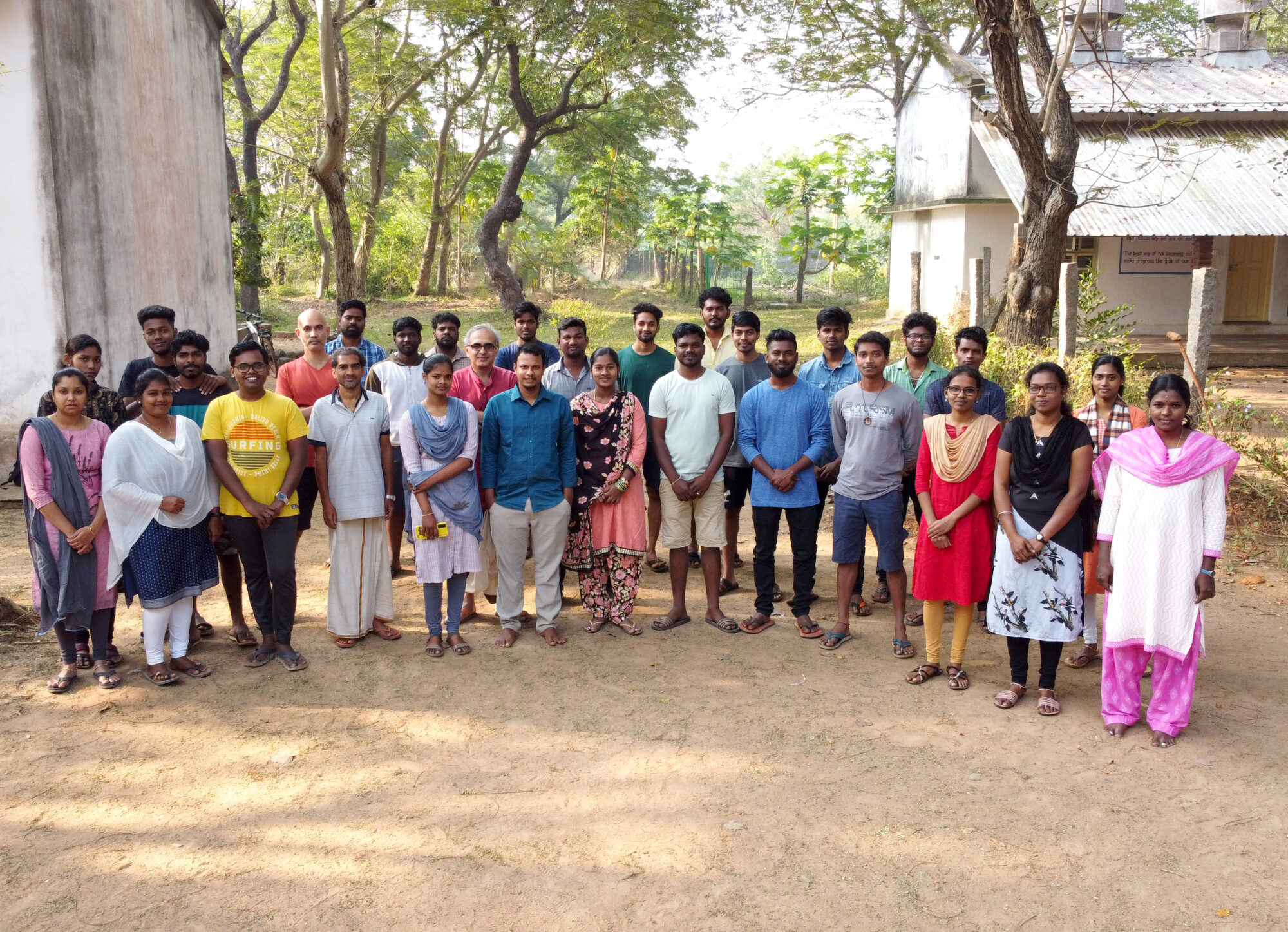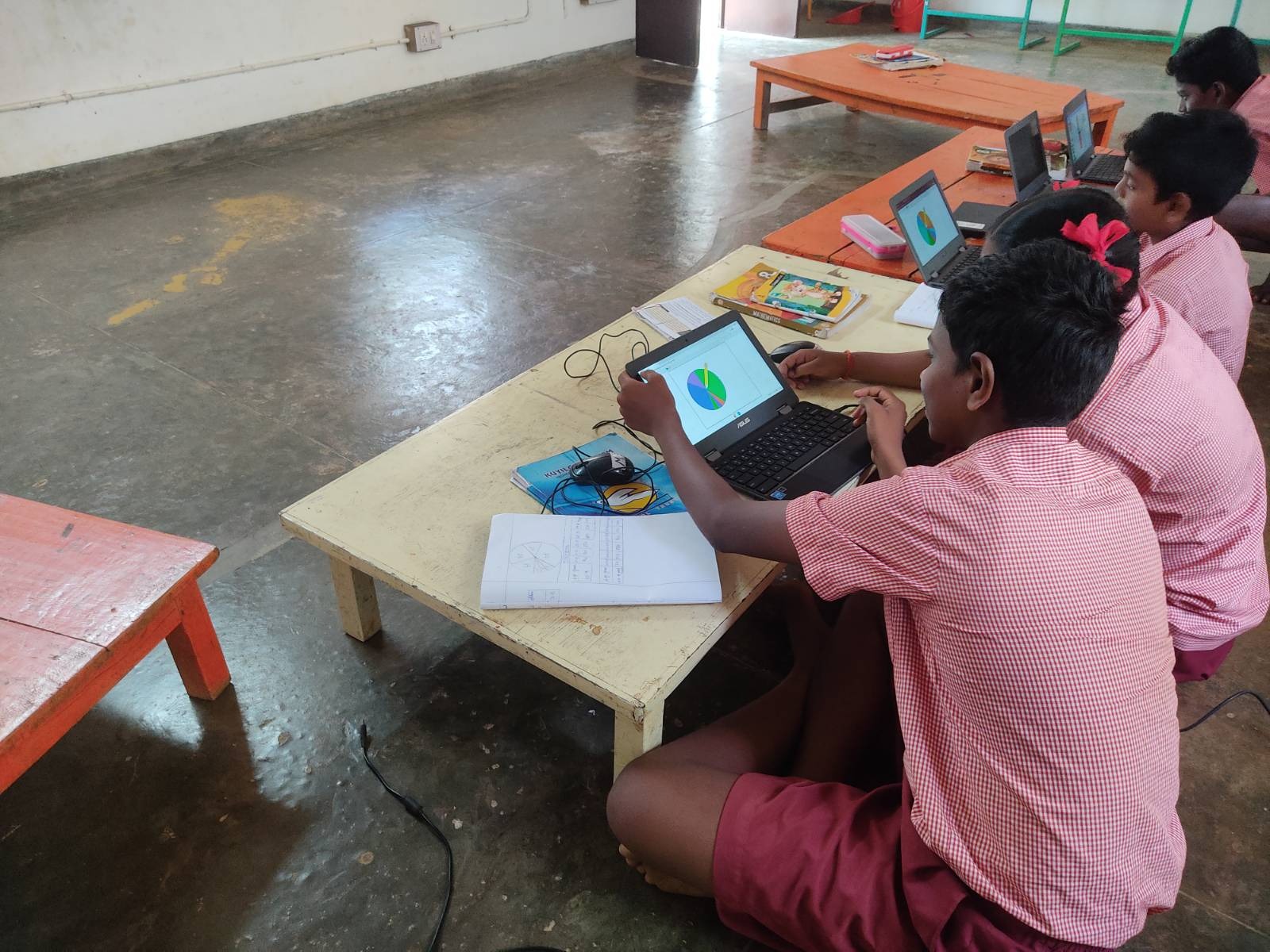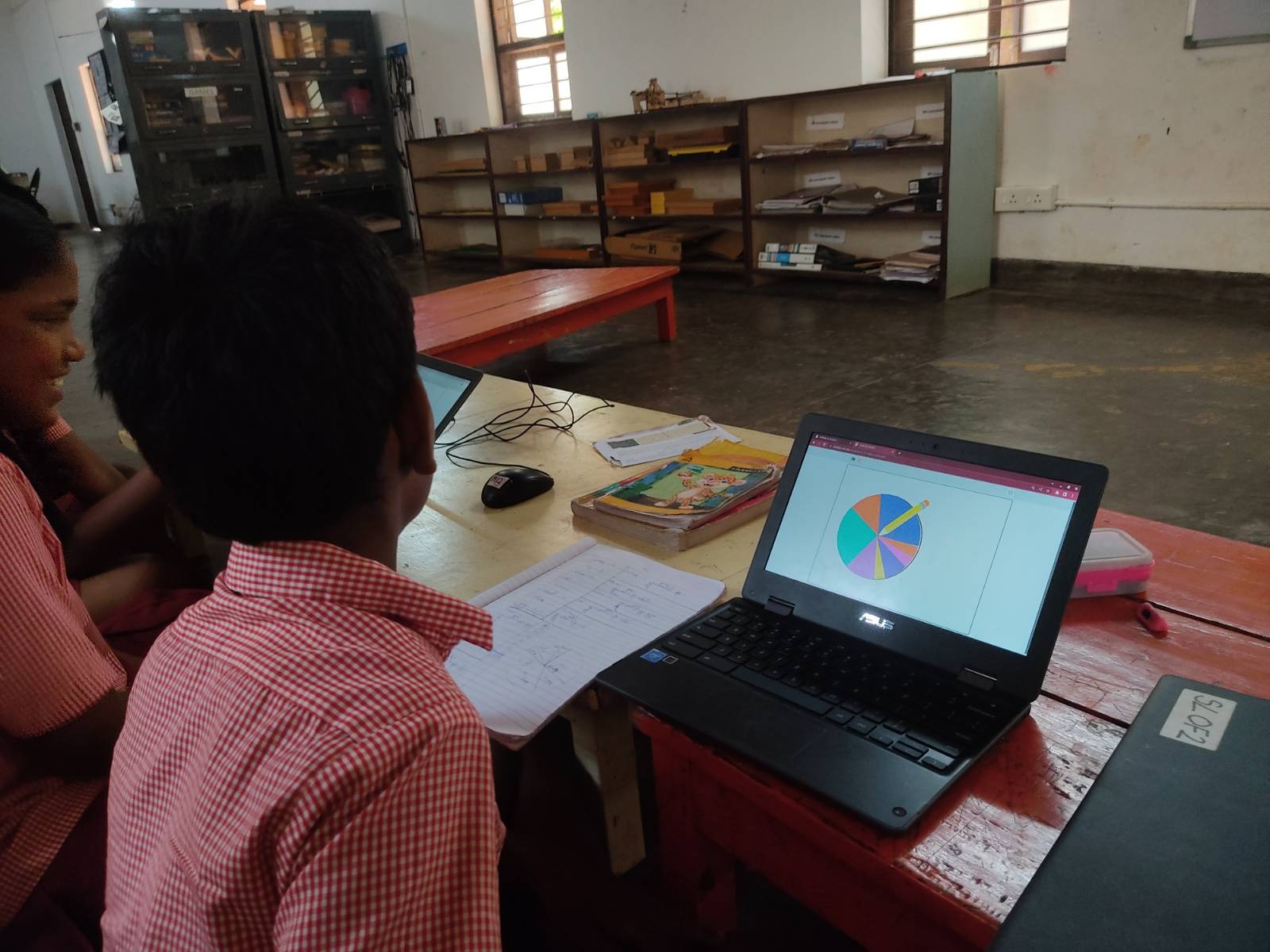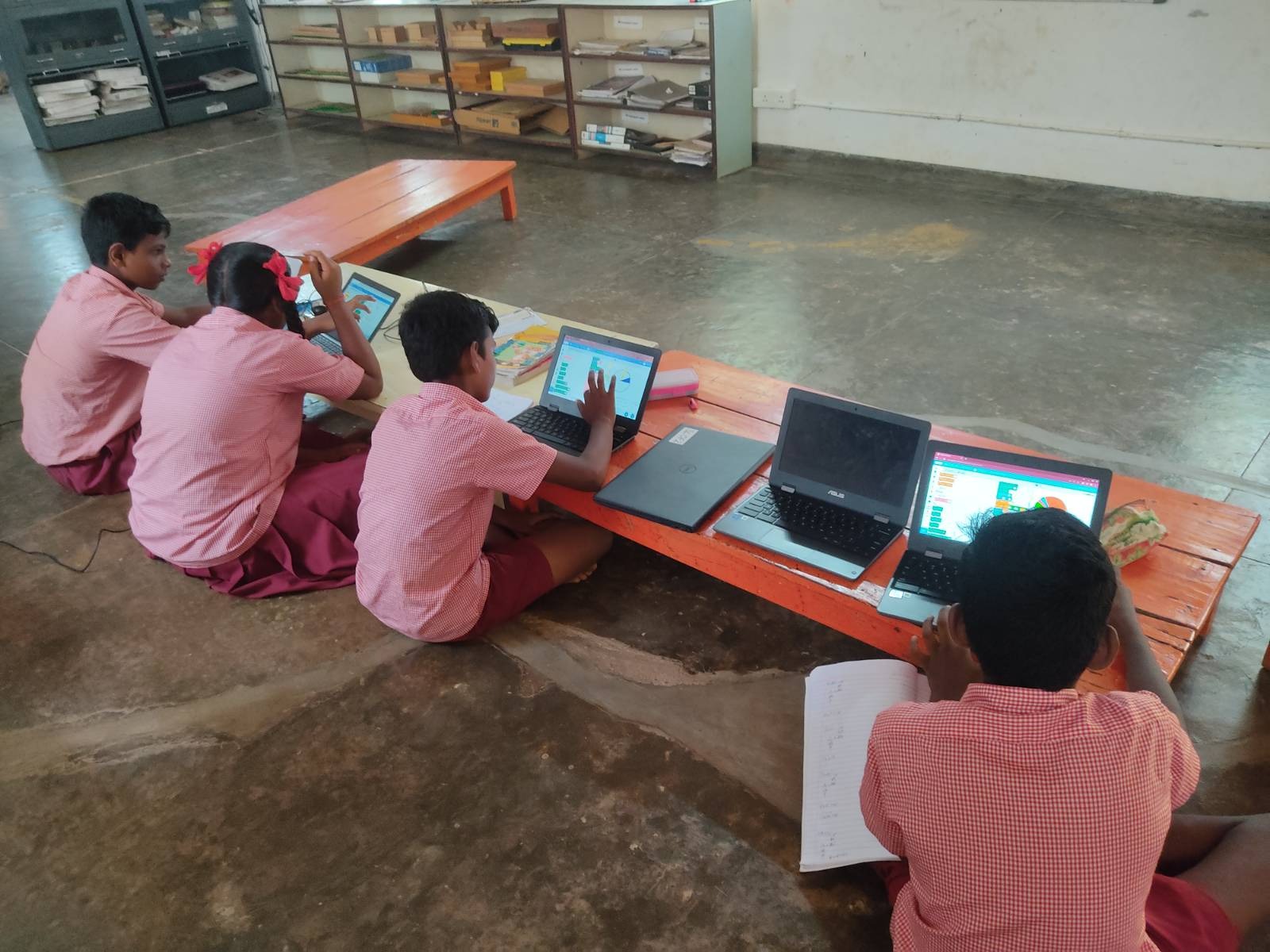~Poovizhi, Soundhariya, Ilakya, Premkumar, Dinesh, Preethi, Sanjay
Thamarai (After school program) did a summer camp. Our Mathegramming team visited Thamarai to support students by explaining mathematical concepts visually and in a way that is fun. Our goal at Thamarai was to create a space for students to not only understand mathematics but also to enjoy it.


Visualizing place values:
Using Dines blocks, students were able to figure out what each place value means, such as ones, tens, hundreds, and beyond. They started to play with the numbers in a fun and hands-on way, and they could also identify the place values accurately.
We also introduced another method using sketch pencils. Students can increase their exploration with these pencils. They can use these pencils to identify the arrangements of Dines blocks, understanding the importance of each place value. Whether it’s a simple two-digit number or a multi-digit number, they can figure it out with the help of sketch pencils.

Working with the Thamarai students was a fantastic experience for both the Mathegramming team and the students.
As the team worked with the students, we noticed that everyone was learning new things without even realizing it. It was amazing to see how these simple ways of explanation could turn into grand adventures of thinking and learning. Students started to work together, sharing their ideas and exploring new things.


As our time with the Thamarai students came to an end. They had been amazing to work with, and we were grateful for the memories we shared. On our last day together, the students surprised us with a special ceremony to say thank you to the Mathegramming team.
Sitting in a circle, they each spoke about what they had learned and how much they enjoyed our time together.

To show their gratitude, the students gave each of us a gift. They were simple things, like the handcrafted sand pots they had made and written acknowledgment letters. But they meant a lot because they showed that our time together had meant something special to them.
The experience taught us that teaching and learning are about more than just books and lessons it’s about building connections and creating moments that make a difference for a long time.
We also covered other mathematical topics like decimal division, exponents, algebraic questions- finding age of a person, area rectangle, Introduction about similar triangles.
Divisibility rule:
We taught divisibility rules, By explaining the rules for each number, such as divisibility by 2, 3, 4, 5, 6, 8, 9, and 10, students gain a deeper understanding of how numbers interact and can quickly determine whether a number is divisible by another. Later we gave them a random number to divide, there they learned about the recurring and non-terminating decimal numbers.
Decimal division:
In teaching decimal division, we explained a simple method for removing decimal points: multiply or divide by powers of 10. By using numbers like 10, 100, or 1000, we can shift decimal points to make division easier. This practical approach helped students grasp the concept and handle decimal calculations more effectively.
Laws of exponents:
We first explained how these rules work by expanding powers. By breaking down the concepts of multiplication and division involving exponents, students gained a solid understanding of the laws. We then applied this knowledge to the order of equations, focusing on multiplying terms and simplifying expressions using the laws of exponents.
Similar triangles:
The students enjoyed using the geoboard to make different similar triangles and see how they were alike. It helped them understand similar triangles better and practice geometry in a fun way.
Reflections from Thamarai:
“I want to acknowledge your support during the camp and the dedication, you created with the students inspiring us. Thank you so much for the effective iterative session for making the student. self-examine and understand the basic concepts. We will follow up with the report soon and share it with you.” – Savithri on behalf of Thamarai team


Reflections from the team:
My name is Premkumar I deeply care about courage and equality for myself and others what I had felt while working with Thamarai children that I can also learn as many things as possible when I really care about others learning and growth it made me feel so special while working with kids and I really enjoyed the whole process and learnt that I can give something to the kids which they can teach to others and the peer learning will be excellent.
My name is Ilakyaarasi I stand for patience and courage for myself and others. I had a great time with the students. The students were calm and patient to learn from us though it didn’t match with their main core.
My name is Soundhariya I stand for courage for myself and others. Working with Thamarai children, I noticed that they learn to think differently to solve problems by creating their own stories, games, and using math-related materials. Everyone was learning new things without even realizing it, making them more energetic and effective. This approach helps them understand how it relates to daily life.
My name is Dinesh, I stand for care and perseverance for myself and for others. While working with the Thamarai children, I realized the importance of understanding where they get stuck in problem-solving or approaching a problem. I found it effective to engage with them at their level, whether they misunderstood the problem or were unsure how to proceed after certain steps, by offering various approaches such as using pen and paper methods or math materials
Sanjay:
Interacting with the Children at Thamarai was an extremely enjoyable experience. I wish I could have stayed longer than 11:00 AM each day, but I was grateful that I was even able to spend that amount of time with the children.
I would like to Acknowledge both Sanjeev and the Mathegramming team for their support and for their creative approach to teach Math using materials. It is the teaching materials which made math more like a game than anything else. Mathegramming team members also told me about how enjoyable it was for them to interact with the Children at Thamarai. What stood out for all of us was the enthusiasm of the Children for learning via the materials
I wish to thank the entire team at Thamarai for providing us with the opportunity to do something meaningful and enjoyable. I hope for many more such opportunities for collaboration between StemLand and Thamarai in the future.

































